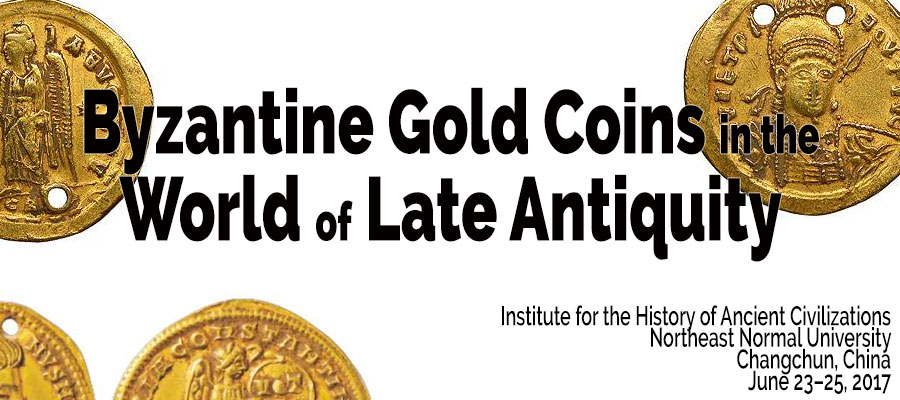Byzantine Gold Coins in the World of Late Antiquity, Institute for the History of Ancient Civilizations, Northeast Normal University, Changchun, June 23–25, 2017
If one wants to adopt the chronological term “Late Antiquity” to cover the “world”, mainly referring to the regions from the Mediterranean Sea to Mesopotamia from around AD 300 to 700 (i.e. the late Roman and Early Byzantine Empire on the one side, and Sassanian Iran and the Early Arab Empire on the other), the first thing is to figure out the common characteristics of that world in these times. For instance, when thinking of the world of the Hellenistic Age (330-30 BC), some outstanding traits come into our mind immediately, such as the chain of Greek cities ranging from Syria to Afghanistan, or the spread of Greek language in the time of the Maurya Dynasty and the Kushan Empire, furthermore the influence of Greek art on very distant countries, as the Gandhara Buddhist statues demonstrate.
In studying the Hellenistic world and the successive Pax Romana, coins indeed play an important role in detecting the depth of impact of the Greco-Roman world. For instance, lead pies appearing in the first-century tomb in Gansu corridor (Chinese borderland at that time) marked the eastern boundary of what was Hellenistic. Instead of following the normal motifs of ancient Greek coins (intricate portrait of the ruler and deities with inscriptions surrounding him) like Kushan and Parthian coins did, what one can find in these Chinese “hybrids” were only inscriptions (in a distorted Greek alphabet). However, the portrait, the center of the Greek coin, was ignored. The Roman imperial coins and their imitations excavated from Óc Eo, southern Vietnam, on the other hand, show how far the influence of the Roman Empire reached in the historical setting of Indianization in Southeast Asia.
This is the view what we expect to look upon the “world” of Late Antiquity. What made it different from the “world” in other periods? What were the markers of this world: the wider diffusion of several world religions including Christianity (Nestorianism), Manicheism, and to a lesser extent, Judaism? the role of some communities as intermediaries in the cross-regional and cross-cultural trade, like the Sogdians and the Steppe people? the circulation of a variety of luxurious goods like precious metal works and glassware to meet the increasing needs for kingship ritual?
The symposium aims at studying the wider spread of Byzantine as well as Sassanian coins from Constantinople to Chang’an with a comparative and connective approach. By analyzing these “dollars in the middle ages” to measure the expansion of the “world” in Late Antiquity, one has to ask what features we should pay special attention to? Monetary economy in the long-distance trade, pattern of trading, or social use of them in the communities with different ethnicity and culture? And, last but not least, there is the question that whether Byzantine coins can be added to the above-mentioned list? What are the boundaries or limits of this “Globalization of Late Antiquity” in comparison to the modern world through the view of coins?
